 The following introduction was added to this column when a series of reprints began in 1997.
The following introduction was added to this column when a series of reprints began in 1997.
Set forth below is the fifth “Texas Shout” column. It first appeared in the April 1990 issue of The American Rag (then West Coast Rag). Inasmuch as the text has not been updated, I should mention that, during the past eight years, non-genre music has replaced Dixieland on the festival scene to the extent that the Dixieland festival circuit now mostly consists of (1) regional events hiring local bands and (2) one-stage weekends hiring a few bands, or a few dozen individual all-stars, to play for 400-500 people. The problem described in the later portion of the column is less disturbing now because, in accordance with these developments, there are fewer festivals claiming to be “Dixieland” events.
In recent years, I have noticed that non-genre music is becoming a larger part of the Dixieland festival and club circuit. Producers are booking non-genre bands, some of which are proving to be their most popular draws. Some of today’s Dixieland bands include in their sets a few non-genre performances, which are also meeting with favorable crowd response.

There is a significant element of the Dixieland community which is unhappy about this development. I am no longer one of them, and I do not propose to use this space to complain. However, because the controversy still rages, I am going to make my points without naming names, lest someone conclude that I am criticizing where no criticism is intended.
What I would like to do today is share with you my views on how this situation came about. Those of you who know me very well won’t be surprised to read that I believe there is a musical reason for this changing emphasis.
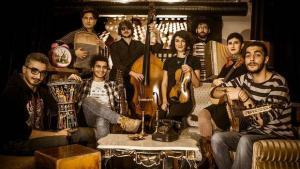
First, let’s be sure what’s meant when I say “non-genre” music. I am talking about performances at Dixieland festivals that are not, and make no real claim to be, Dixieland performances. (“STAD”, as my dear friend Anna Wahler would put it, but propriety precludes setting out the full translation in this column.) Examples that come to mind including the booking at major “Dixieland” festivals of groups that play mostly or exclusively swing, country/western, blues and/or salsa.
I am not talking about what are commonly referred to as “show bands”. These are Dixieland bands that package their product with a keen eye for high production values, for ear-catching numbers with a substantial orientation toward excitement and accessibility.
Some purists turn away from the show bands, asserting that they are shallow and commercial. As a general proposition, I disagree. If any of you have seen The Rent Party Revellers’ “Guide To Dixieland Jazz” show, or heard it on audiocassette, you will know that (as explained in an early part of the show) I consider entertainment for its own sake an authentic and valid function of Dixieland jazz.
The “show” bands, in my view, if they are playing Dixieland jazz and not some other music, belong at a Dixieland festival. To be sure, some of them have not yet developed the skill needed to entertain without being shallow and commercial. However, the better ones (which, I am pleased to say, include most of the really popular show bands) deliver the goods when they start to play, offering creative charts, a high level of musicianship, and well-knit ensembles.
In short, the show Dixieland bands are operating within a branch of Dixieland jazz that, like any other style (uptown New Orleans, Chicago, West Coast revival, hot dance, etc.) can be played badly or well. As long as they play Dixieland, they should be represented at Dixieland festivals.
Now back to non-genre music. When I came to Dixieland jazz, in the pre-rock-and-roll days, the other people at a Dixieland concert would be fairly knowledgeable about Dixieland. They were there because they knew what Dixieland was, and they wanted to hear it on that occasion vs. other available kinds of pre-rock music, such as swing, country/western or urban blues.
At that time, as I covered at some length in a column in the January 1987 issue of The Mississippi Rag, all types of popular music used the same fundamental building blocks — such as four-or-eight-bar phrases and circle-of-fifths chord progressions. With all of us, consciously or not, having become acclimated to these common elements, the differences between, say, Dixieland and swing were easier to perceive. We could tell them apart more easily and deliberately chose the music that most appealed to us.
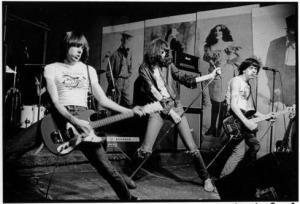
Rock, which has dominated the pop charts for the past 35 years or so, has reversed this situation. Its current musical vocabulary is completely different in every respect — melody, rhythm, dynamics, chord progressions, whatever — from any type of popular music and jazz that preceded it in this country.
Rock is so radically different in these respects, and is so overwhelmingly popular, that it has crowded virtually all non-rock popular music and jazz into the same corner. As a result, to many people (particularly if they are not deeply into music) the pre-rock forms of music are less distinguishable than they used to be. Dixieland, ragtime, swing and vintage popular songs, because of their common elements mentioned above, now seem a lot like each other when compared to rock music. The differences between them are harder to discern when rock is the commonly-accepted standard of measurement.
 Further, rock today is ubiquitous. It’s all over the airwaves, on film and TV soundtracks, in commercials, everywhere. More than half the people in the U.S. have lived their entire lives during the rock era, absorbing rock that comes at them from every direction. Naturally, most people whose musical tastes are conditioned in this fashion have great difficulty relating to music that doesn’t have electrified sound, high volume, heavy back-beat and the other accouterments of rock.
Further, rock today is ubiquitous. It’s all over the airwaves, on film and TV soundtracks, in commercials, everywhere. More than half the people in the U.S. have lived their entire lives during the rock era, absorbing rock that comes at them from every direction. Naturally, most people whose musical tastes are conditioned in this fashion have great difficulty relating to music that doesn’t have electrified sound, high volume, heavy back-beat and the other accouterments of rock.
What about the rest of us, usually folks past middle age who had our musical tastes formed before rock took over? Today, if someone wants to get away from rock music, he may well investigate a Dixieland club or festival. Whatever else he knows about Dixieland, he’ll know that it came before rock.
Anyone from pre-rock times who investigated the Dixieland scene would discover, and would have discovered at any time in the last twenty-five years, that it consisted largely of persons of his age or older, generally well-behaved, fun-loving people. He would have discovered music to which he could relate, and ballroom dancing of a type that he grew up with. He would not feel assaulted by the youth/drug culture, by humorless lyrics that centered totally on adolescent concerns, etc.
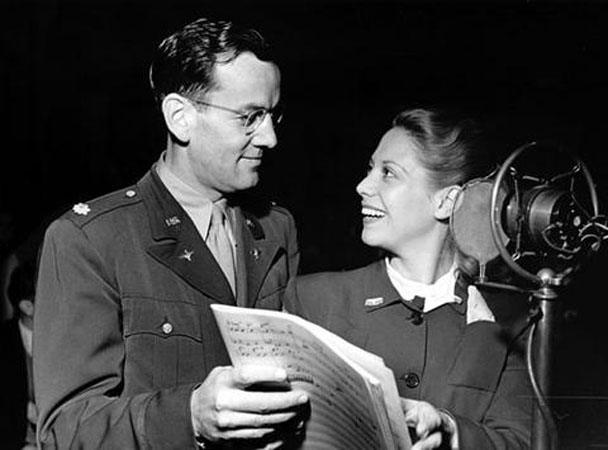
It doesn’t surprise me at all that so many mature people who, if rock had never appeared, would be listening to today’s equivalent of Dinah Shore, Eddy Arnold or Harry James, have now gravitated to the Dixieland scene. However, we should keep in mind that these people are not there because they had any advance commitment to Dixieland as an art form. Many of them will be perfectly happy with any kind of music that they can dance to that isn’t too loud. And if the truth be told, many of them would probably rather hear something that’s more reminiscent of Xavier Cugat or Sammy Kaye than of Turk Murphy.
I believe that this element of the Dixieland community is a large and growing segment of our audience. It may even now be the largest segment — after all, dedicated Dixieland devotees never were more than a small proportion of the overall population.
 At any rate, and probably without realizing why this audience is out there, Dixieland club officers and festival producers have obviously become increasingly aware that a major part of their crowds wants very much to hear, at least once in a while and maybe more than that, non-genre music. One can hardly blame them for booking acts that satisfy the demands of their patrons.
At any rate, and probably without realizing why this audience is out there, Dixieland club officers and festival producers have obviously become increasingly aware that a major part of their crowds wants very much to hear, at least once in a while and maybe more than that, non-genre music. One can hardly blame them for booking acts that satisfy the demands of their patrons.
So far, so good. Anything that attracts people to a Dixieland environment is going to benefit our music, bringing financial and other resources to it, even if some of those people don’t spend much or any time listening to Dixieland when they get there. If the addition of an element of non-genre music makes those folks happier and helps keep them around, it’s O.K. with me.
I am concerned, though, about what these people think when they open their “Dixieland” festival program and find that the headline artist is a pop singer from the thirties, or learn that the most crowded venues are the ones with the country/western band. Are they going to conclude that these attractions, being heralded as the top or most popular names, are what Dixieland is all about? Not being told otherwise, will these people perceive that the real Dixieland bands, perhaps not being headliners or not drawing so well, are somehow not doing their jobs correctly?
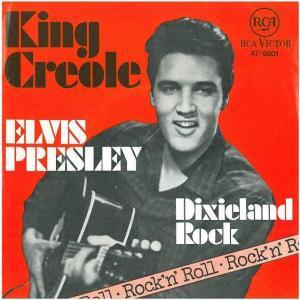 You may scoff at such concerns, but I could cite some examples where just such misconceptions have occurred. Those of us with a deep commitment to Dixieland ought to want the public to have a better understanding of what Dixieland is and to have a better ability to appreciate good Dixieland. To that end, I have a mild suggestion that might reduce confusion without interfering with anyone’s good time.
You may scoff at such concerns, but I could cite some examples where just such misconceptions have occurred. Those of us with a deep commitment to Dixieland ought to want the public to have a better understanding of what Dixieland is and to have a better ability to appreciate good Dixieland. To that end, I have a mild suggestion that might reduce confusion without interfering with anyone’s good time.
I would like to see the festivals and clubs that sponsor events where Dixieland is a principal attraction make a point of identifying non-genre music in their advertisements and program notes. There is no reason why such identification has to be done in any sort of negative way. For example, the ads could list Dixieland by Bands A, B, C and D; Swing by Bands E and F; Ragtime by Band G; etc. The program notes should make a point of stating what type of music each band plays without somehow trying to sneak in some marginal relationship to Dixieland where none actually exists, and should clearly point out that the event offers a variety of musical styles for those who don’t want to spend every minute listening to Dixieland.
Such a policy would help educate the audience about what it’s hearing, would help attendees plan their listening schedules and would help those who might be considering a long trip decide more easily which events on a potential itinerary are most likely to offer the mix of music that they prefer. It would also help bandleaders evaluate which festivals and clubs to contact regarding possible gigs by putting into clearer perspective the different types of music on which a given organization focuses.
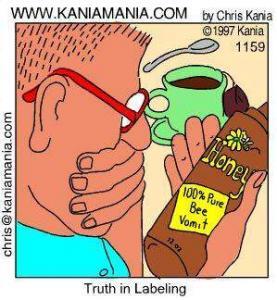 Further, a practice of identifying non-genre music might help the clubs and festivals define their own rules more clearly. There are “Dixieland” festivals out there now hiring so much non-genre music that, perhaps, they should be calling themselves by names that more accurately describe to prospective attendees what to expect on the bill. Such festivals might be better off to openly acknowledge that they are now festivals of “American music”, or “Dixieland and vintage pop”, or “1920s-30s jazz”, or whatever.
Further, a practice of identifying non-genre music might help the clubs and festivals define their own rules more clearly. There are “Dixieland” festivals out there now hiring so much non-genre music that, perhaps, they should be calling themselves by names that more accurately describe to prospective attendees what to expect on the bill. Such festivals might be better off to openly acknowledge that they are now festivals of “American music”, or “Dixieland and vintage pop”, or “1920s-30s jazz”, or whatever.
At any rate, such a change would go far to reduce any valid reason for the hard-core Dixielanders at such events to gripe about the performers. Since festivals and club concerts are, above everything, supposed to be fun for all, anything that raises the level of good cheer has to be a plus.
Back to the Texas Shout Index.

The full run of “Texas Shout” has been collected into a lavishly illustrated trade paperback entitled Texas Shout: How Dixieland Jazz Works. This book is available @ $20.00 plus $2.95 shipping from Tex Wyndham, On request, Tex will autograph the book and add a personalized note (be sure to tell him to whom the note should be addressed).
Tex Wyndham’s 3 CD Guide to Dixieland with music and commentary is available for $20 plus $2.95 shipping. The separate CD, A History of Ragtime: Tex Wyndham Live At Santa Rosa, is available for $13.00 plus $2.00 shipping. On request, Tex will autograph the inner sleeve and add a personalized note (be sure to tell him to whom the note should be addressed).
Send payment to Tex Wyndham, P.O. Box 831, Mendenhall, PA 19357, Phone (610) 388-6330.
Note: All links, pictures, videos or graphics accompanying the Shouts were added at the discretion of the Syncopated Times editorial staff. They did not accompany the original columns and do not necessarily reflect the opinion of Tex Wyndham.
From roughly 1970-2010, Tex Wyndham was: (1) one of the best-known revivalist Dixieland jazz musicians in the US, as cornetist, pianist and bandleader, (2) one of the best-known ragtime pianists in the US, and (3) one of the most respected critics in the US of Dixieland jazz, ragtime, and related music. He is the only person about whom all three of those statements can be made.


















